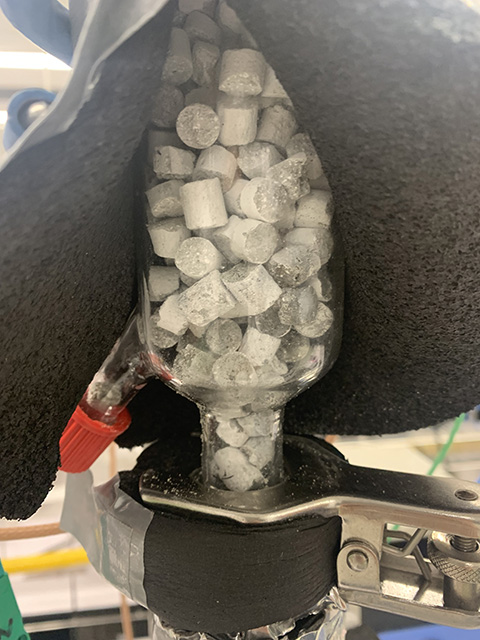2024-11-13 米国国立再生可能エネルギー研究所(NREL)

A laboratory-scale thermochemical materials reactor is filled with a strontium chloride cement composite. Photo from NETenergy
<関連情報>
- https://www.nrel.gov/news/press/2024/thermochemical-tech-shows-promising-path-for-building-heat.html
- https://www.sciencedirect.com/science/article/abs/pii/S0306261924016015
ビル暖房用のオープンサイクル熱化学エネルギー貯蔵: 実用的なシステム構成と有効エネルギー密度 Open-cycle thermochemical energy storage for building space heating: Practical system configurations and effective energy density
Yi Zeng, Ruby-Jean Clark, Yana Galazutdinova, Adewale Odukomaiya, Said Al-Hallaj, Mohammed Farid, Sumanjeet Kaur, Jason Woods
Applied Energy Available onlin:e 19 August 2024
DOI:https://doi.org/10.1016/j.apenergy.2024.124218
Highlights
- Developed and validated a 1D model of an open-cycle reactor using salt-hydrate thermochemical materials (TCM).
- Simulated HVAC+TCM configurations and evaluated performance across various building types and climate conditions.
- Chosen configuration uses exhaust air from the building to discharge the TCM to avoid drying out the indoor space.
- Highest energy density/lowest cost in applications with higher indoor humidity (humidified buildings or humid climates).
- Energy density and cost effectiveness can be improved through improved TCM properties.
Abstract
Salt-hydrate thermochemical materials (TCM) are promising candidates for energy storage systems for building space heating due to their high theoretical energy density and the need for low regeneration temperature. However, water vapor is required to drive the hydration process of the TCM reactor, which poses a challenge during winter when water vapor is typically scarce. Using indoor air directly lowers the building’s humidity to an unconformable level in practice, while the cold outdoor air contains limited moisture. Here we consider different integration strategies for open-cycle TCM reactors in buildings and develop a model to simulate their thermal performance across diverse buildings and climates, specifically for building space heating. The potential energy densities and the levelized cost of storage of the TCM reactor are evaluated in practical scenarios to demonstrate the load-shifting potential of TCM systems for heating applications. We use a strontium chloride (SrCl2)-based composite as the baseline and explore the impact of various reactor and material changes to the energy density and levelized cost of storage.



